What's New
Displaying results 1801 - 1810 of 4899
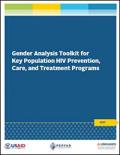
Resource | Tools,
A gender analysis can be used to increase the effectiveness of HIV prevention, care, and treatment activities for key populations by identifying the specific gender issues in a given context, describing how they could affect a program’s goals, and identifying ways to work around or transform gender-related barriers and leverage gender-related opportunities. For USAID-funded projects, USAID requires that a gender analysis be conducted during the project design phase to inform a project’s design and implementation; it is the first step in the gender integration process.
The toolkit contains all the information needed to conduct a comprehensive gender analysis. However, in recognition that programs may want to conduct a more streamlined analysis, key steps can be found on pages 7-16. Each step can be streamlined based on time, resources, and information available for a gender analysis.

Resource | Publications,
Youth Voices Count (YVC) is a regional community network of sexual and gender minority youth in Asia and the Pacific. Founded in 2010 by 40 young gay men, transgender women, and other men who have sex with men, from 19 countries, YVC addresses issues related to HIV, health, and human rights through capacity building, advocacy and community mobilization. Led by a dynamic group of young persons from the region, YVC brings together community leaders to address stigma and discrimination, including self-stigma, and to leverage the power of young people in regional and international gatherings, including its most recent involvement with UNAIDS High Level Meeting on HIV held in 2016 in New York, USA.
Youth Voices Count envisions a society in which young people of [all] sexual and gender diversity including [those that identify as] lesbian, gay, bisexual, transgender and queer identities lead safe and free lives with equal opportunity to achieve their full potential and well-being.

Resource | Publications,
East and North-East Asia (ENEA), as one of the most dynamic, innovative and fast-developing areas of the world, has made remarkable progress over the past two decades − with annual GDP growth higher than that in the Asia-Pacific region and the rest of world. The ENEA subregion is well advanced in achieving the Millennium Development Goals. Yet many challenges remain. The ENEA subregion still has a large number of people living in poverty and a large disparity in income among countries, with Japan at one end of the spectrum and the Democratic People's Republic of Korea at the other. There has been no fundamental trend in reversing environmental and resource losses, or in reducing the growth of greenhouse gas (GHG) emissions. The subregion's resource-intensive economic growth has led to large increases in the demand for materials and energy.
This publication highlights challenges and priorities of the East and North-East Asian subregion in achieving the Sustainable Development Goals.

Resource | Publications,
The Asia-Pacific Sustainable Development Goals Outlook report aims to develop a shared understanding of the opportunities and challenges confronting the region. This report provides a goal by goal snapshot of where we stand, including bright spots, hot spots and emerging issues for our region as we implement the 2030 Agenda for Sustainable Development.
Limitations of data and the sheer complexity of the issues addressed by the 2030 Agenda have constrained this effort. Nonetheless, a picture emerges of a region that has, on the aggregate level, achieved several of the Millennium Development Goals but in which too many of its people are still not benefiting from growth and progress and are increasingly vulnerable to economic, social and environmental risks. In 2013, 400 million people lived on less than $1.90 per day (in 2011 PPP). With business-as-usual practices, we may not realize the brighter future that global leaders in 2015 committed to reach in 15 years’ time.
This outlook report provides a starting point for dialogue and will support follow-up and review at the regional level. It can also help governments and other stakeholders to reach much-needed social and political consensus and focus on the gaps and priorities for moving forward. It also focuses attention on the opportunities for bringing the Asia-Pacific region together in action on cross-cutting issues and in support of the countries that face multiple challenges.
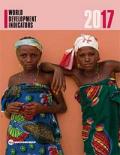
Resource | Publications,
This edition marks the 40th year of World Development Indicators, which was first published as an annex to the 1978 World Development Report. As the world has undergone many changes, World Development Indicators has grown and adapted alongside it. Country coverage and the range of indicators have expanded: The online database (http://data.worldbank.org) now includes more than 1,400 indicators for more than 220 economies, with some data series extending back more than 50 years.
This year the World Development Indicators database has been improved to include more indicators that cover the Sustainable Development Goals and more data disaggregated by sex, age, wealth quintile, and urban or rural location. New data include access to clean cooking fuels and the number of industrial design applications registered globally. Data on GDP in current prices and inflation now account for breaks in time-series.
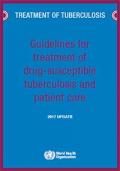
Resource | Guidelines,
The update of the Guidelines for treatment of drug-susceptible tuberculosis and patient care is important in the context of the End TB Strategy, which recommends treatment and patient support for all people with TB. This update by WHO aims to use the best available evidence on the treatment of drug-susceptible TB and interventions to ensure adequate patient care and support in order to inform policy decisions made in these technical areas by national TB control programme managers, national policy-makers and medical practitioners in a variety of geographical, economic and social settings.
The objectives of the updated Guidelines for treatment of drug-susceptible tuberculosis and patient care are:
1) to provide updated recommendations based on newly emerged evidence on the treatment of drug-susceptible TB and patient care; and
2) to provide a summary of changes in the new guidelines together with all the existing and valid WHO recommendations on the treatment of drug-susceptible TB and TB patient care.
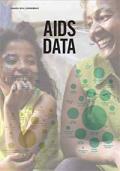
Resource | Publications,
AIDS data contains the very latest data, from the end of 2015 and in mid-2016, on the world’s response to HIV: the latest information on the number of people living with HIV, the number of new HIV infections, the numbers of people—both adults and children—on HIV treatment, the coverage of prevention of mother-to child transmission of HIV services and expenditure on the AIDS response, both domestic and international. Trends show both the remarkable progress made in HIV treatment and the challenges that exist for HIV prevention. By region and by country, by sex and by age, data are presented through both graphs and charts and in extensive tables.
This publication brings together in one place a part of the huge volume of data collected by UNAIDS over the years. The full data set of information for 1990 to 2015 can be found on an interactive website: aidsinfo.unaids.org.

Resource | Publications,
#WhatWomenWant was launched as a campaign, powered by young women who want to be meaningfully involved in making change for women and girls. Using social media, it offers an innovative vehicle to amplify new voices, meet young women where they are, allow them to connect with others, lead with lived expertise, bring their solutions to the table, and build across and between issues, sectors, and movements.
The campaign engages through an expanding network of primarily women-led organizations and individuals who are working to advance gender equality through a women’s rights and health focus.

Resource | Publications,
This report describes and analyses key aspects of global health over the last decade. It considers trends and policies that are relevant to the role and potential influence of the World Health Organization (WHO). It deals with themes and areas of the world’s health, where progress would have been expected, was explicitly pledged, or was urgently needed.
This report is not intended to be a work of scholarship, nor to address every aspect of global health. It is intended to look back and reflect on the trends, achievements and challenges of global health over the last decade – and to explore the needs of the future.
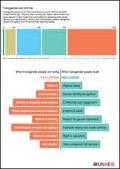
Resource | Fact Sheets,
Transgender people are 49 times more likely to acquire HIV than all adults of reproductive age. They face, from a young age, stigma, discrimination and social rejection in their homes and communities for expressing their gender identity. Such discrimination, violence and criminalization prevent transgender people from getting the HIV services they need stay healthy.





